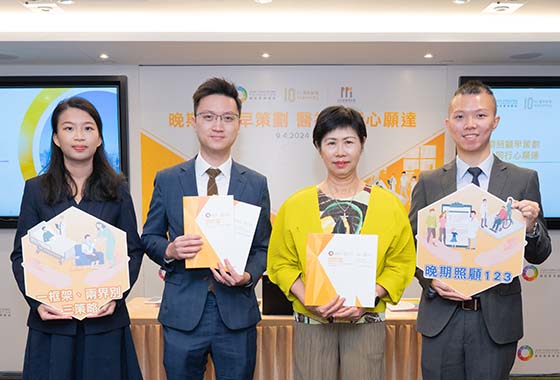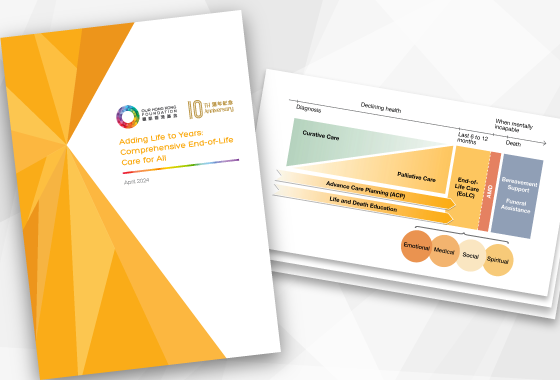Health, social vulnerabilities should be considered in isolation-facility admission
This article appeared originally in the CHINADAILY on 27 Feburary, 2022.
Authors:
Stephen Wong, Legislative Council member, senior vice-president of Our Hong Kong Foundation, and executive director of its Public Policy Institute.
Emily Ma, assistant researcher at Our Hong Kong Foundation

Hong Kong’s public hospitals are nearing collapse, and the fifth wave of the COVID-19 outbreak has added to their woes. Even with more than a year’s time to prepare for waves of COVID-19 outbreaks, the special administrative region government was still caught by surprise.
In a densely populated city with small living spaces, home isolation has increasingly proved to be unfeasible, particularly for the socially and economically deprived. The slow progress in identifying and building makeshift hospitals and isolation facilities has meant many of the most vulnerable in society have had nowhere to go when infected. Many infected elderly individuals who had lived in nursing homes were left outside of the hospitals and were sent to a temporary shelter at a sports center only after unwanted press attention. Likewise, some foreign domestic workers who were COVID-19 positive managed to find temporary shelter only through charitable groups.
The chief executive announced on Feb 22 that the isolation facilities rushed to be built can accommodate about 60,000 people over the coming months, but according to experts, mandatory testing to take place next month will lead to increased caseloads that may eventually overwhelm the supply. Therefore, it is inevitable that the government must have criteria for prioritizing those with not only health vulnerabilities but also social vulnerabilities to be admitted into these finite facilities.
On Feb 23, an online form was launched by the Department of Health (DH) to help arrange patients to be admitted to isolation facilities upon notification of a positive result. The DH said that it takes living environments into consideration when prioritizing who gets admitted. It is evident that prior to this date, a thorough needs assessment of confirmed patients and their household contacts had not been done.
As the government continues to identify potential sites for conversion into and the construction of isolation facilities, Hong Kong can learn from the Chinese mainland in prioritizing the isolation of individuals for whom an appropriate place to isolate is not available. For example, the Nanjing Muncipal government instructed that positive cases in child and elderly-care institutions be offered priority of admission to community isolation facilities when isolation wards are unavailable at their institutions. If Hong Kong had such a prioritization policy, we would not have left elders stranded outside hospitals, exposing them to greater risk.
The mainland’s emphasis on taking all-around considerations of the individuals when making isolation arrangements is also noteworthy. In early 2020, the Ministry of Civil Affairs instructed cities to actively identify and report to authorities any “special groups” that include foster, “left-behind” children and the elderly, and people with disabilities among those people placed under home quarantine. Their “fitness to quarantine” will be assessed, and upon identifying these “special groups”, their information and needs will be logged so that they can receive tailored medical, socio-emotional and meal support. For instance, one consideration factor consistent across many cities is whether the dependent’s caregivers were isolated. If so, the necessary wrap-around care was provided by multidisciplinary teams and volunteers, rather than sending the non-infected dependents to the hospitals.
Hong Kong’s DH should therefore coordinate with the Social Welfare Department in identifying patient risks beyond the medical criteria and the number of household residents, to include considerations for housing status, dependence on a caregiver, and whether one has friends or family to provide for their daily necessities. People ranking higher on the risk score should be admitted into a facility first.
Meanwhile, if the SAR government’s key recommendation now is for people to stay home prior to admission, the government can look to Singapore, where a clear and medically supported home isolation policy, the Home Recovery Programme, was put in place in October 2021. Based on clinical and pandemic experience, the Ministry of Health in Singapore devised such a plan in which groups that are at lower risk of complications based on age and vaccination status will immediately isolate at home upon receiving a notice of a positive test result. People in the program have 24/7 access to medical support through telemedicine offered by primary care doctors, and access to a “home recovery buddy” for non-medical assistance. As a result of the Home Recovery Programme, Singapore was able to convert formerly occupied isolation facilities and quarantine centers into more community isolation facilities for those who are not able to isolate themselves at home, or who may have vulnerable people at home.
The SAR government could likewise issue a clearer policy that acknowledges home isolation as the plan for low-risk infected individuals and people highly dependent on caregivers, while ensuring they are well supported when doing so—bringing services to vulnerable citizens at home. This can free up isolation spots for people truly in need of a facility to isolate. For instance, beyond sending toolkits with manuals and rapid antigen tests, the government should mobilize the private primary-care providers in the community to offer pro bono or voluntary medical advice through telemedicine. Community-based service providers such as staff at the DH clinics and the District Health Centres should be leveraged. The effectiveness of Home Affairs Bureau’s hotlines could have been bolstered had it referred people with non-medical needs to local organizations in their district in addition to only providing answers to general inquiries. A strategy should also be created to mobilize volunteers to deliver daily necessities to “special groups” in greatest need, like what is being done in the Chinese mainland for the quarantine of residents in high-risk premises.
It is time our policymakers take up the responsibility to safeguard the vulnerable in society through a swift, targeted, and coordinated pandemic response that leverages more on community resources and the non-medical sector. As we race against the speed at which COVID-19 spreads, there is no time to spare — and we must be more prepared for the next battle.



